Several kids are among the recent trail camera photos prompting me to compile the safety tips found at the end of this post.
A first bear sighting after a season of hibernation:

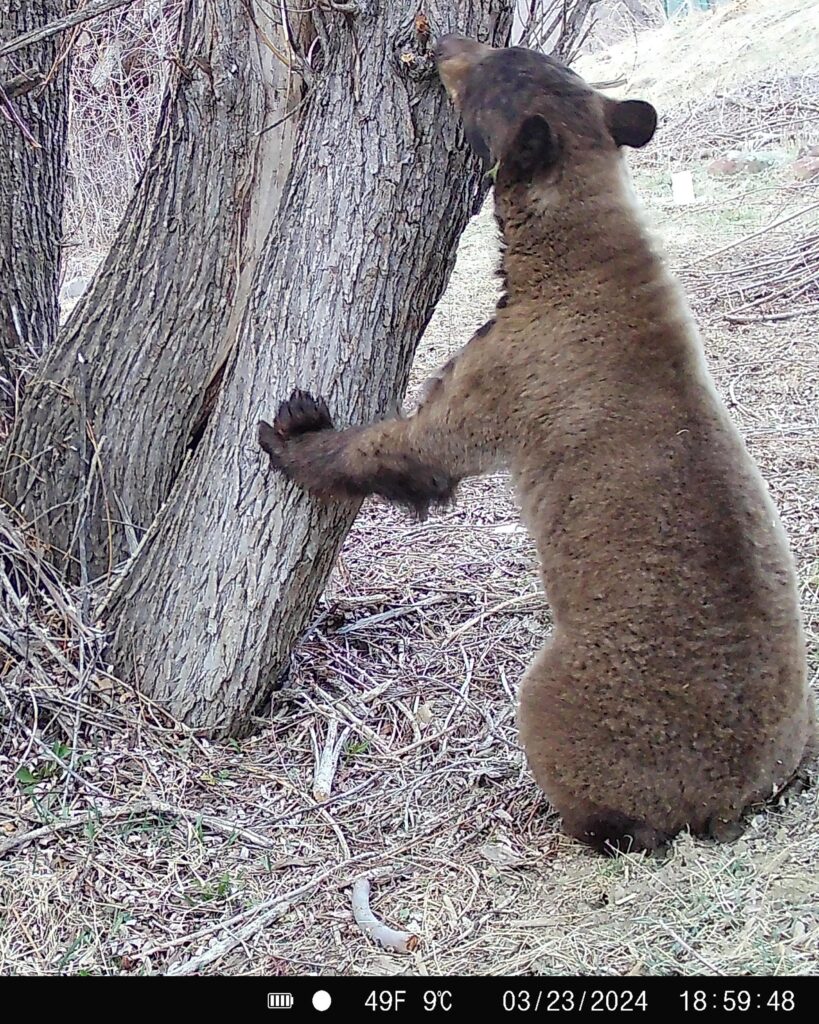
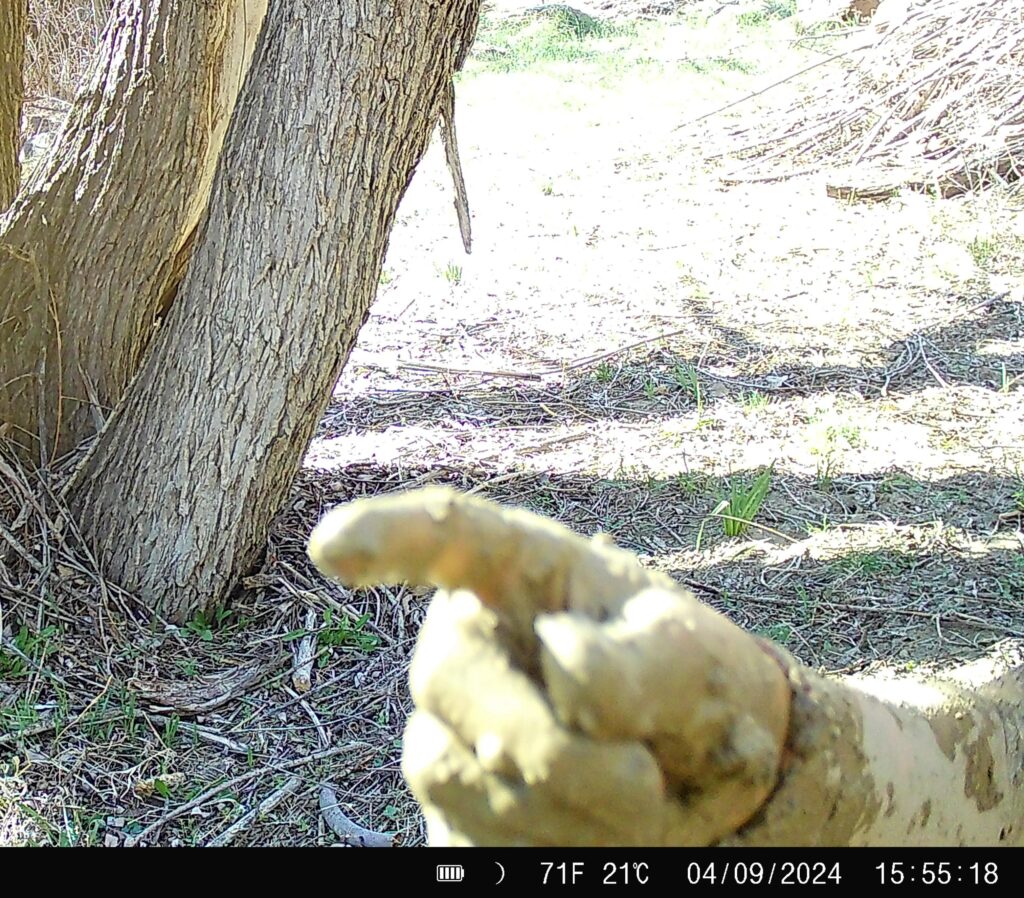
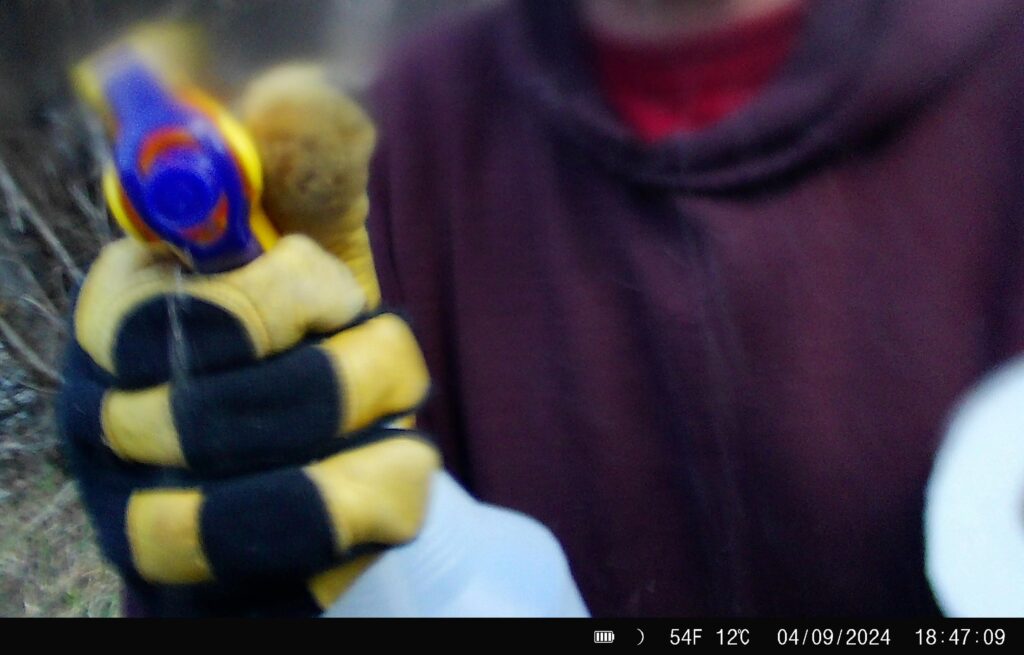
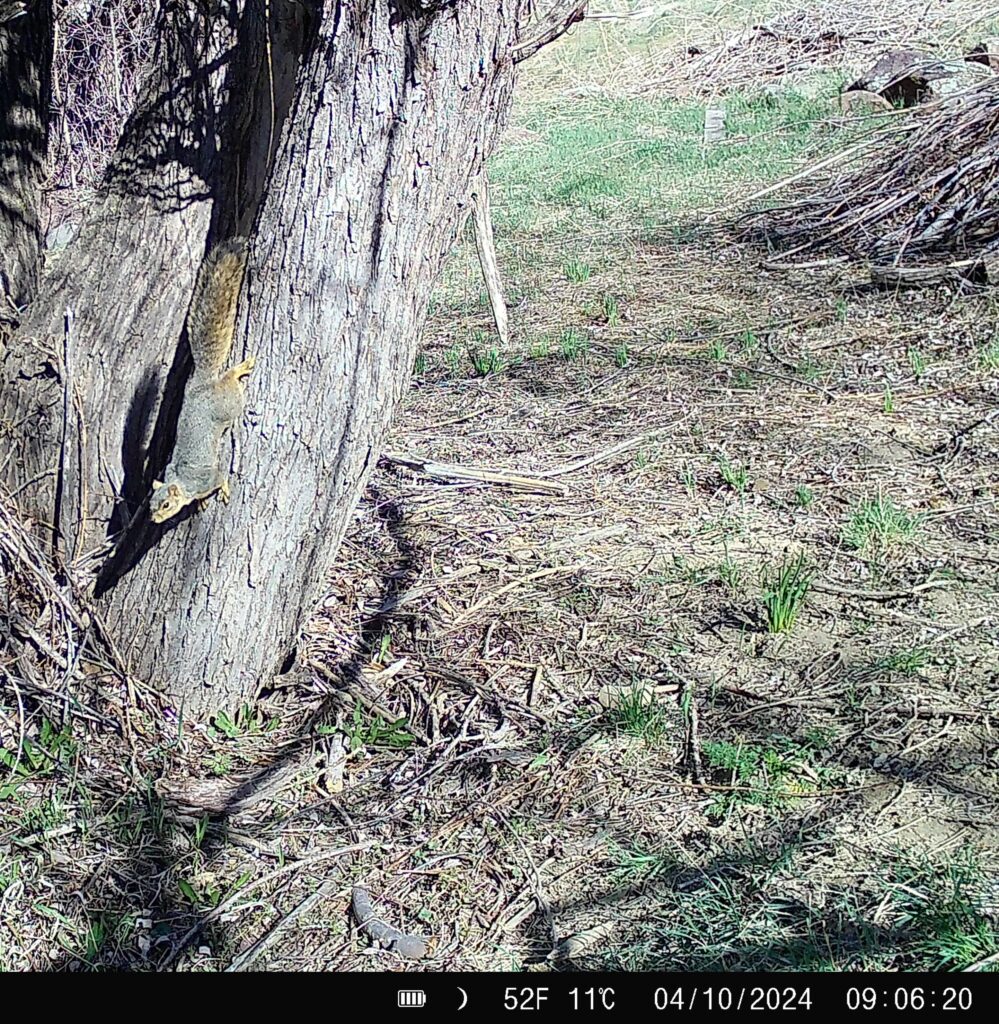

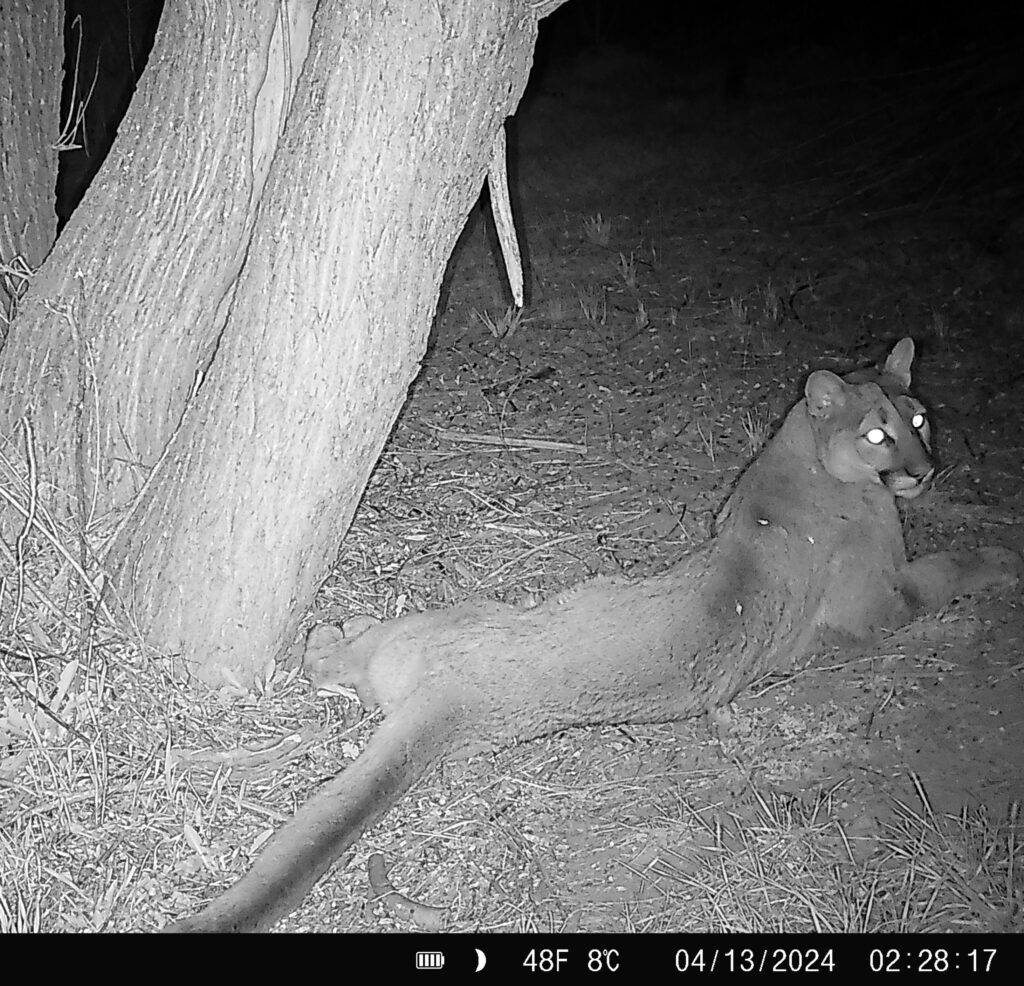
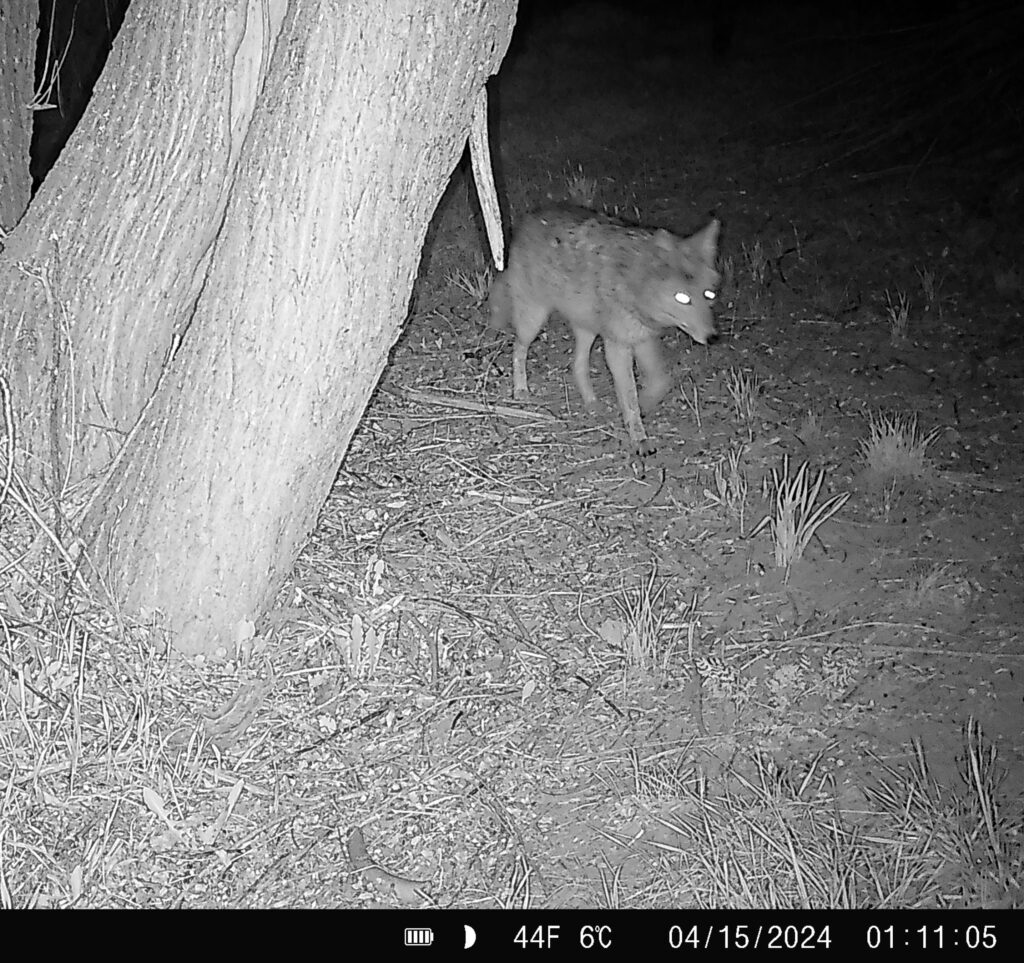
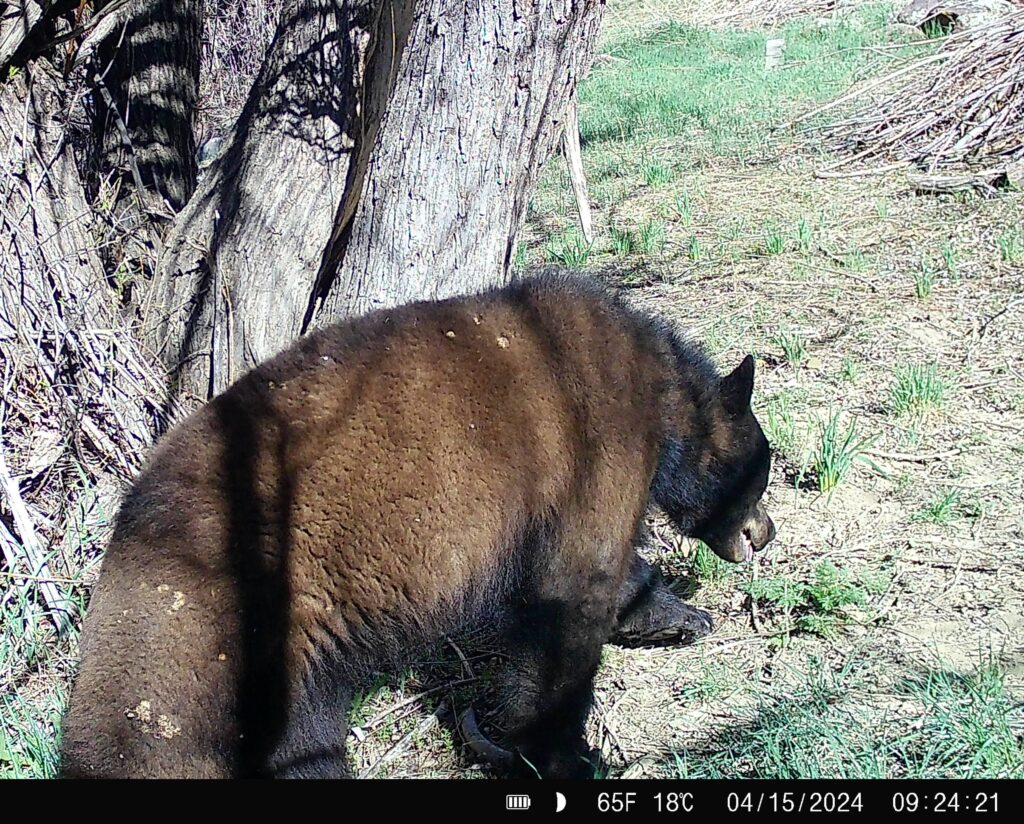

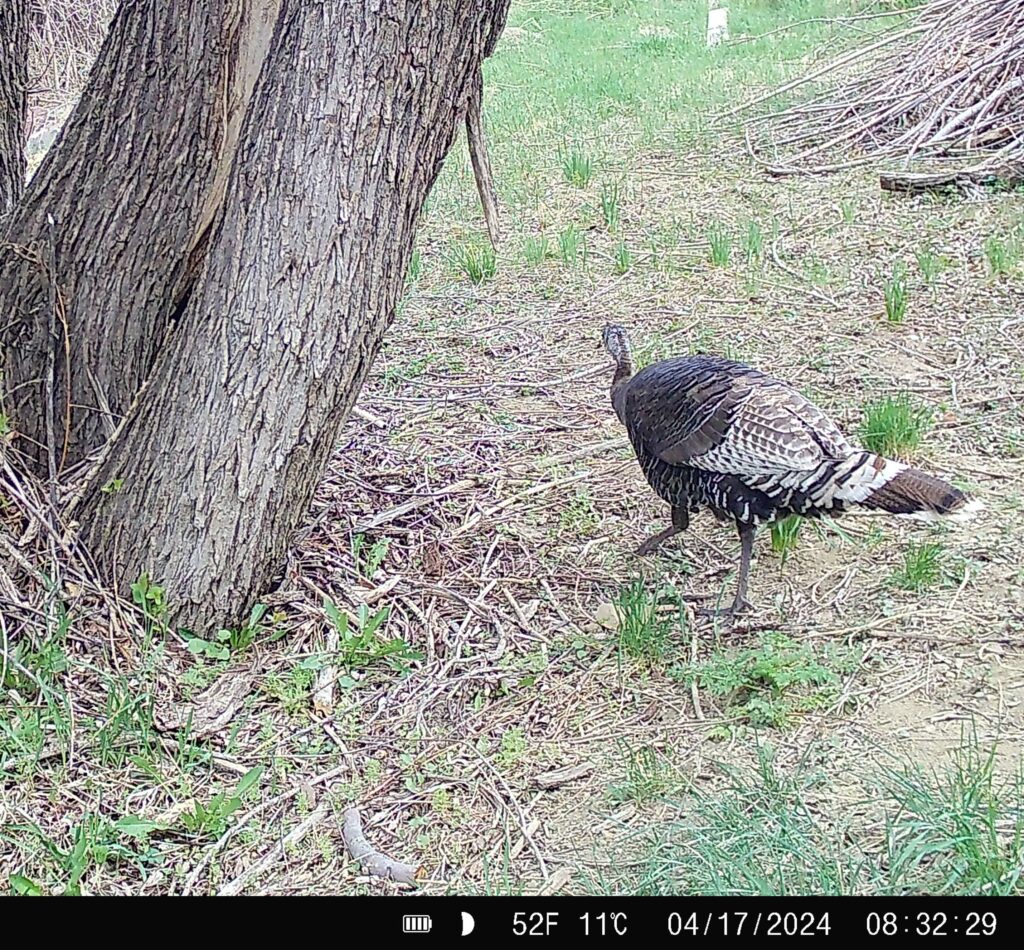
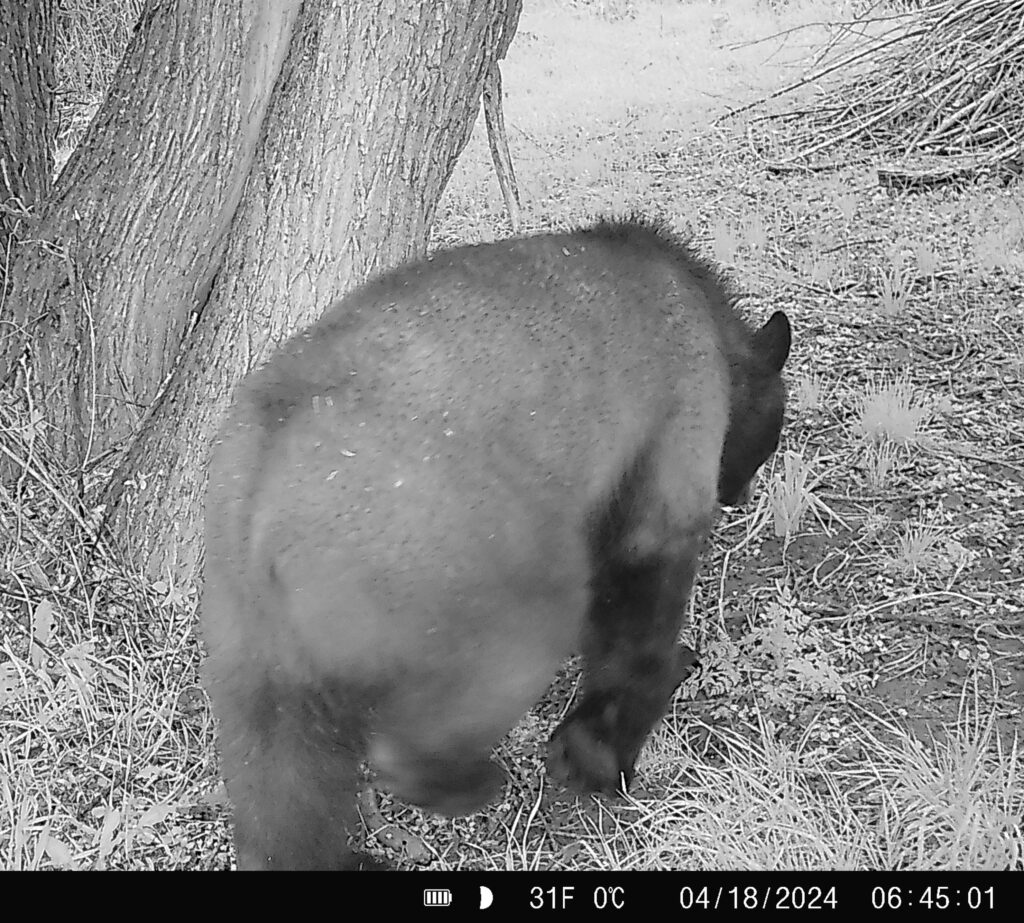
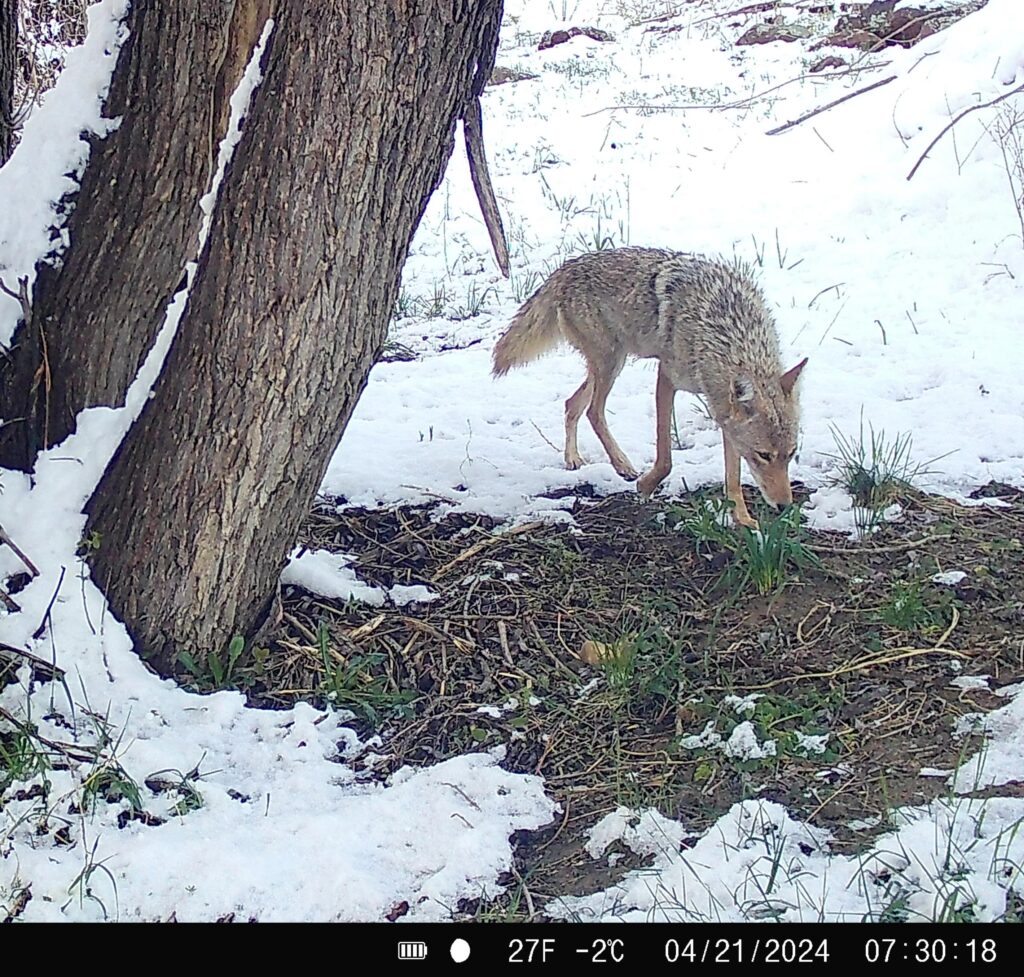
As you can see, the backyard ravine where this motion-activated trail camera sits is a wildlife corridor, a sort of passageway for countless species of wild animals. Several young people have started to play in this area; and while I love seeing kids play outdoors, I also want them to be informed about possible dangers. When I overheard a trusted adult telling one boy that he should run if he sees a mountain lion (which is actually bad advice), I compiled the following safety tips (found online) to share with parents and others in touch with kids who want to explore in this wild backyard.
In general:
• Do not go into wild areas alone. Go in groups, ideally with adults supervising children. Groups are more intimidating to wildlife and are easier for animals to detect and avoid.
• Any species can be dangerously protective of their young including the lions, bears, coyotes, bobcats, skunks, raccoons and deer that travel through this area.
• Avoid dawn and dusk excursions.
If seeing a mountain lion:
• Keep children close to you. Animals seem especially drawn to children.
• Pick up small children. The mountain lion will see small children as easier prey.
• Do not approach a lion. Most mountain lions will try to avoid confrontation, so give them a way to escape.
• Do not run from a lion. Running may stimulate a mountain lion’s instinct to chase.
• Do not crouch down or bend over. A human standing does not resemble a mountain lion’s natural prey.
• Do all you can to appear large. Raise your arms. Open your jacket if you are wearing one. Wave your arms slowly and speak firmly in a loud voice.
• Fight back if attacked. Mountain lions usually try to bite the head or neck; try to remain standing and face the attacking animal.
If seeing a bear:
• Identify yourself by talking calmly so the bear knows you are a human and not a prey animal. Remain still; stand your ground and slowly wave your arms. The bear may come closer or stand on its hind legs to get a better look or smell. A standing bear is usually curious, not threatening.
• Stay calm and remember that most bears do not want to attack you; they usually just want to be left alone. Bears may bluff their way out of an encounter by charging and then turning away at the last second. Bears may also react defensively by woofing, yawning, salivating, growling, snapping their jaws, and laying their ears back. Continue to talk to the bear in low tones; this will help you stay calmer, and it won’t be threatening to the bear. A scream or sudden movement may trigger aggression. Never imitate bear sounds or make a high-pitched squeal.
• Pick up small children immediately. Do not make any loud noises or screams—the bear may think it’s the sound of a prey animal.
• Do NOT run or make sudden movements.
• Moving to higher ground can be another way to make yourself look as large as possible.
• Do NOT allow the bear access to your food. Getting your food will only encourage the bear and make the problem worse for others.
• Do NOT drop your pack as it can provide protection for your back.
• If the bear is stationary, move away slowly and sideways; this allows you to keep an eye on the bear and avoid tripping. Moving sideways is also non-threatening to bears.
• Do NOT run, but if the bear follows, stop and hold your ground. Bears can run as fast as a racehorse both uphill and down. Like dogs, they will chase fleeing animals.
• Do NOT climb a tree. Both grizzlies and black bears can climb trees.
• Leave the area or take a detour. If this is impossible, wait until the bear moves away. Always leave the bear an escape route.
• Be especially cautious if you see a female with cubs; never place yourself between a mother and her cub, and never attempt to approach them. The chances of an attack escalate greatly if she perceives you as a danger to her cubs.
May the young people continue to have lots of safe fun outside!


